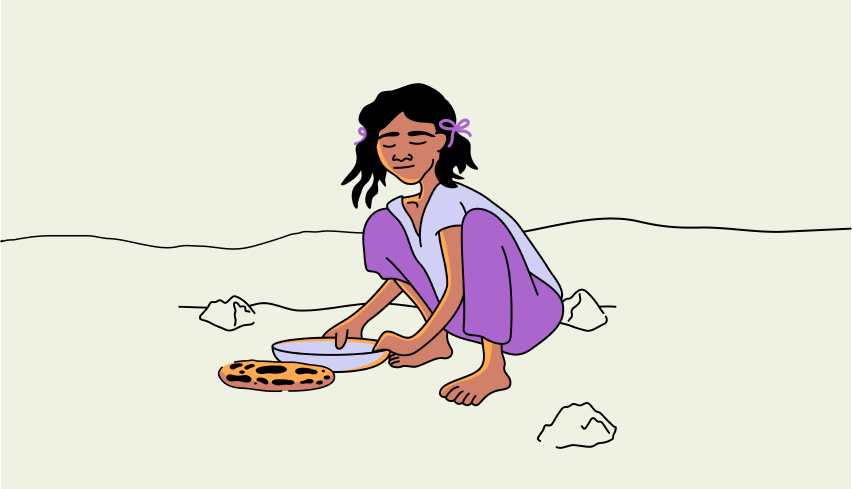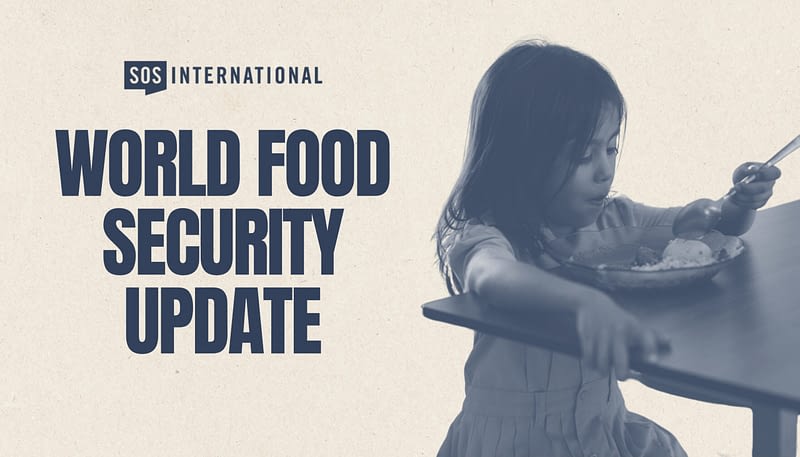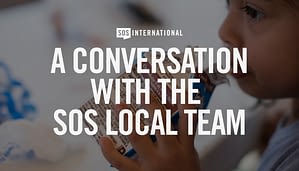Written By: SOS International
Every day brings new challenges and opportunities in the ongoing battle against hunger. Recent observations highlight the changing landscape of food security worldwide. Data from leading researchers underscore the varying levels of food insecurity that different regions experience, influenced by many factors.
World Wide
Approximately 1 in 11 people worldwide face hunger, with Africa feeling a heavy part of this crisis 20.4 percent or 1 in 5 individuals in the continent of Africa are food insecure.¹ Asia, an area of the world we work in, follows, with an 8.1 percent hunger rate in a region home to over half of the world’s hungry population. Latin America, another region where we work, sits at 6.2 percent. It seems likely that Latin America will see an increase in food insecurity as the region is currently in an immigration crisis.
That being said, the overall global situation of food insecurity has not improved. From 2022 to 2023, hunger increased noticeably in Western Asia, the Caribbean, and several African subregions. In 2023, an estimated 2.33 billion people, accounting for 28.9 percent of the global population, experienced moderate to severe food insecurity ², facing a lack of reliable access to adequate food. Among them, 864 million individuals—approximately 10.7 percent—faced severe food insecurity ³, which poses serious risks to their health and well-being.
Distinguishing food insecurity levels
Adapted from FAO‘s Definitions⁴
- Mild food insecurity: Individuals who are uncertain about their ability to obtain sufficient food in the near future.
- Moderate food insecurity: Individuals who are forced to compromise on the quality and variety of their food. This may include reducing their overall food consumption and skipping meals.
- Severe food insecurity: Individuals experiencing severe food insecurity have typically run out of food and, in extreme cases, may go a day or more without eating.
North America
In the U.S., the most recent data shows that more than 13.5% of households in the US are food insecure.⁵ One unique thing about North America and Europe is that food insecurity is more prevalent in urban areas than rural areas (rural areas still face unique challenges that lead to food insecurity). That is why large cities such as New York City, Los Angeles, Houston, and Dallas report higher levels of food insecurity due to population sizes, cost of living, and food demand.
Texas is witnessing some of the highest rates of food insecurity in the nation. Since 2021, the food insecurity rate has sharply increased to 16.4 percent of Texans being food insecure. That is 1 in 6 people, totaling up to nearly 5 million.⁶ This is felt strongly in our own backyard in the DFW area, where the food insecurity rate is 20.8 percent, with 286,860 children, or 1 in 5, up from 15.8 percent in 2021.⁷
How We Feed
The burden of food insecurity is a worldwide issue that affects each community differently. Because of that, our feeding efforts are tailored to address each unique need. Our strategies include emergency feeding, specially formulated foods to combat extreme malnutrition, school lunches, and summer feeding programs.
To carry out this food strategy worldwide, we work with Local Care Networks that know how to support their communities effectively. These partnerships play a vital role in making a positive impact when the hunger gap is widening. By working with Local Care Networks, we not only meet community needs but also contribute to trafficking prevention in communities where traffickers are active. That is why feeding is powerful in creating long-term safety and health for at-risk children!
No child deserves to be hungry. To learn more about global hunger, check out the resources below.












